We tend to infuse products with meaning as soon as we touch them. How can we recreate this in retail marketing?

We tend to infuse products with meaning as soon as we touch them. How can we recreate this in retail marketing?
Each and every one of us has had that one special object so infused with nostalgic memory or emotional meaning that we couldn’t dream of giving it up.
No Marie Condo, no move halfway across the country, and no downsizing would ever convince us to give up that 10-year old t-shirt, Gameboy, or FRIENDS DVD box set. These objects are ours. We are endowed with them.
This feeling of ownership towards material products is called the Endowment Effect and has long been researched and tested by psychologists and marketers.
Why do objects inhabit such a special place in our brains?
The truth is, the Endowment Effect is so powerful it doesn’t even have to attach itself to an object that has a deep, emotional backstory; it can happen instantaneously from the moment you put an object in someone’s hand.
Subconsciously, we attribute the object with more meaning, quality, and value from that very first touch.
This article will explain how this effect works and, more importantly, how it can be used to optimize your eCommerce webshop with these 10 Endowment Effect examples that fit within these psychological frameworks:
After all, you want to achieve ultimate customer-centricity with your products to the extent that your visitors will instantly think: these belong to me.
Coined by Richard Thaler, the Endowment Effect is the feeling of owning something, where the idea of possession increases its worth regardless of its objective market value.
At Crobox we leverage endowment in our Dynamic Messages. It's a behavioral nudge that subtly influences shopper's through their buying journeys whilst reducing choice overload.
Read this for a deeper understanding of behavioral nudges. Otherwise, let's continue defining the Endowment Effect from a psychological perspective.
This effect can be explained under three different psychological categories.
My precious - remember Gollum?
Yes, even Gollum was a victim of the Endowment Effect, as people have already drawn parallels with. As soon as the ring was his, he placed a greater value on it, and refused to let go.
The value that we place on material objects place can either be emotional, symbolic, monetary, subconscious, or (in Gollum's case) evil-but-can-also-make-me-invisible.

For example,
A study by Knetsch and Sinden (1984) found that most of their participants were unwilling to trade the lottery tickets they were given first for money, despite the latter having an obvious higher and risk-free value. The opposite held true when the money was endowed to the participants first.
What’s the takeaway?
Well, people are unwilling to part with what they own once they have fostered a sense of attachment and belonging. And this attachment can happen within the first few seconds of placing that object in their hands!
In another study that looked at neural activity in the brain, Knutson (writing for Neuron) found that the Endowment Effect works by “enhancing the salience of possible loss”.
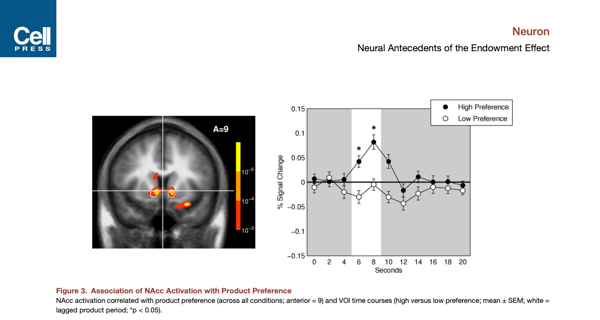
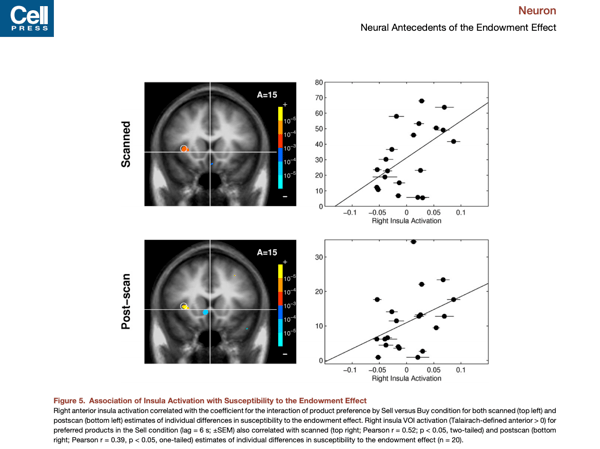
Neural Antecedents of the Endowment Effect
In other words, when we own something we are more inclined to think of the loss of selling it over its actual selling price.
That’s why people refuse to pull out of trading cryptocurrency, since losses are perceived as worse than gains (also called the “asymmetry around the neutral point” or: gains = happy; losses = miserable).
The Endowment Effect thus operates on a subconscious bias: the unwilling exchange of something more valuable for something that you own because, hey, it’s yours.
The effect also has a “norm” built-in - or what can otherwise be considered “the status quo”, which is when:
“The disadvantages of a change loom larger than its advantages” (Kahneman, Thaler, Knetsch Experimental Tests of the Endowment Effect...).
This means that rather than taking the risk of loss or change, people are psychologically more inclined to keep it the same (so: they won’t trade).
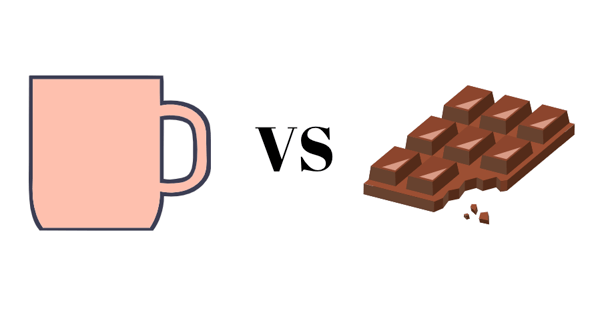
Ok, so in this scenario, it doesn’t matter what you perceive to be better.
In fact, all the respondents in this study were asked to value each item separately. Yet despite valuing the chocolate as more valuable, 89% of those endowed with the mug at the start of the class refused to trade it for the chocolate.
On the other hand, when chocolate bars were given first, only 10% chose the mug. This is a famous example carried out by our psychology friends Kahneman, Knetsch, and Thaler, but they have an important caveat to take note of:
This scenario won’t work on objects that are measured against their use. Therefore, hedonic objects are used to evaluate the Endowment Effect.
This means that if you're selling a utilitarian product, you should highlight its hedonic properties to really leverage this psychology to its best. We’ll show you how to do this later.
Next: monkeys.

Another experiment on trading described in the Journal of Political Economy gave chimpanzees the choice between peanut butter and juice.
As you can imagine, when peanut butter was given first (endowing the chimps with this commodity), then 80% refused to exchange it for the juice.
The opposite was true when juice was given first.
What these two experiments show is that the Endowment Effect has deep roots in our evolution - and that’s why it’s such a powerful tool.
When we instill value on something we immediately transfer a bit of our identity to it.
Thus, we become possessive over that thing.
This points to a discrepancy between what Kahneman, Knetsch, and Thaler confirm is the Willingness to Pay (WTP) and Willingness to Accept (WTA). Basically, we give objects that we own a higher price/value than objects we don’t own.
Herein lies the importance of the Endowment Effect as a marketing tool.
To achieve customer-centric retailing as an eCommerce site, you should make your target audience feel like what you are selling corresponds or belongs to them.
Highlight that your products are more than just products, that they belong to your customers already, and you will speak to our primitive patterns of behavior.
This will:
Here are a few examples and use cases to show you how to do just that (to see full-blown psychological marketing techniques, check out these 46 examples).
Firstly, the Endowment Effect is in action when something “free” is offered. Of course, we hear echoes of Reciprocity (or: quid pro quo, an eye for an eye, you get the point), yet this also leverages the Endowment Effect.
Why?
Well, it's simple really.
Once you give something away your customers will immediately be endowed with your overall product. It will thus be more difficult to give that up when the time comes.
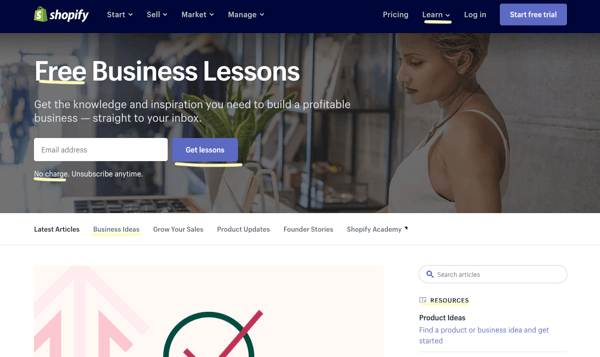
For example, Shopify offers a blog, free lessons, and free trials all with the purpose of helping their customers build their eCommerce businesses or products.
In Wang’s paper on Return Policy and the Endowment Effect (2009), she states that consumers are reluctant to return goods once they have purchased them.
So, by offering a free return policy, or at least a lenient one, this will also show your customers how nice and easy your service is whilst endowing them with the products post-purchase.
Studies have shown that the role of touch-based interfaces magnifies the Endowment Effect. So, the more tactile the experience of a product, this too will drive purchase behavior.
In eCommerce, this works through language. Ever heard of the “imagine this technique”? Part of this technique relies on something called haptic imagery. This is when product information is tactual.

Apple’s showroom lets visitors touch and use all the products without a time-limit. Staff is told not to pressure anyone to leave, and the showroom itself is open and accommodating to support the effect of belonging.
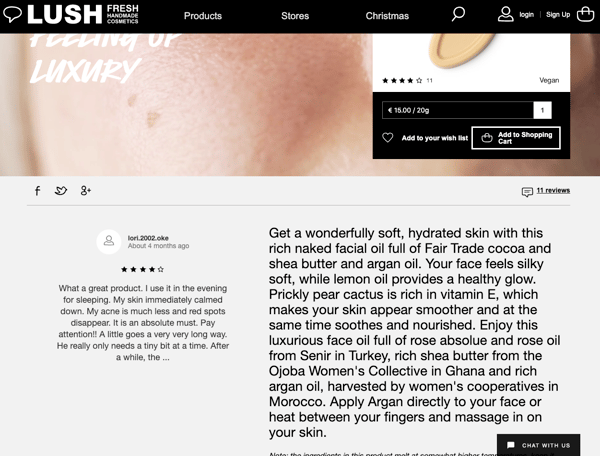
Using the haptic imagery online, Lush describes to their customers how they will feel and what their skin will look like after using the product.
They even include directions on how to use it in the product description, so we are taken through the whole experience. Plus, we have a nice close-up of the lotion in use which contributes to this imagined scenario.

Jack Wills is another great Endowment Effect marketing example. They employ the 2nd person present tense to their product description, as in “keep your tech protected” and the more personal “take it to study club or on your morning commute”.
Jack Wills not only successfully uses the language of their target audience but also makes customers imagine how to implement this product in their everyday lives.
To increase the richness of the consumer product experience, you should personalize the entire customer journey from beginning to end. Make your customers feel like they are being endowed with your service or product from the very beginning.
On your homepage:
On your product lister page:
All these tools will enhance how your product copy is written by understanding what kinds of tactual imagery will relate to who.
Any kind of product interaction will generate a sense of endowment. If we are able to manipulate the visual onscreen, we impart some of our identity onto it... Kind of how the tactile effect works in brick-and-mortar.
 BEO
BEO
For example, Bang & Olufsen allows users to manipulate the speakers onscreen by pinching and viewing them from all angles.
So, we move, build, and manipulate the product to imagine how it would fit into our living spaces. This automatically becomes an example of the Endowment Effect at work.
Converse allows you to choose the color and design of certain shoes, and the act of creation makes you feel like the product has been yours all along. You are personalizing it and it becomes more difficult to abandon as a result.
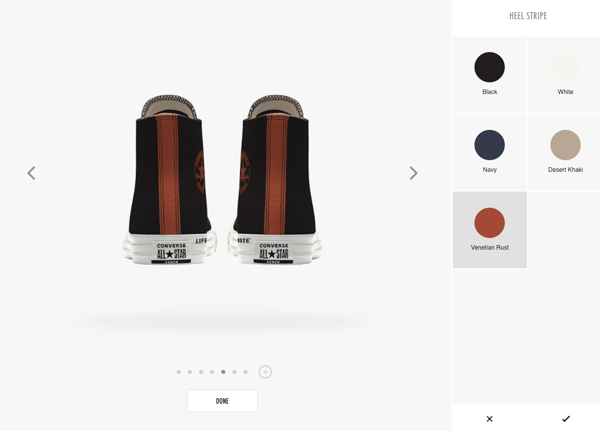 Converse
Converse
In truth, these examples stem from the OG-pioneer of the Endowment Effect, IKEA. The “IKEA Effect” works because after you build your own furniture, you instill way more value on it than it was initially worth.
Any kind of simulation/interaction will be a good way to endow your products:
But remember: don’t overload your website. Choose one that fits your design and that your server can effectively cope with.
If your customers can visualize themselves wearing or using your products, then this will drive their feeling of endowment and thus their purchase behavior.
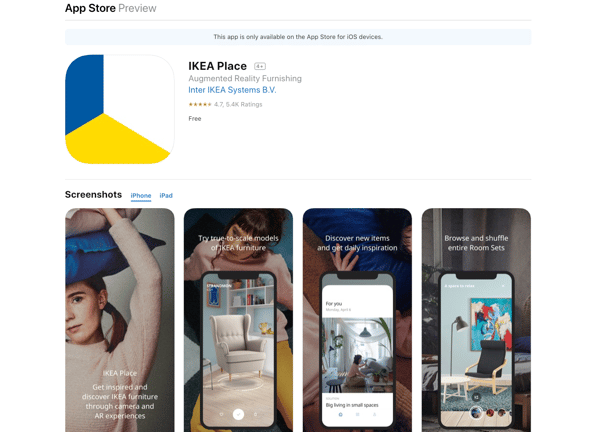
IKEA’s Place app lets you see how a product fits within your personal space. Thus, the product subconsciously becomes endowed as you perceive it to be yours.
 Wayfair
Wayfair
Wayfair goes one step further by completely innovating the way we shop for home decor by transforming it into a VR-Sims like experience. Just like in the Sims, you can build your own rooms but this time using Wayfair products (which also tell you their ratings and price).
You don’t need all the fancy new technologies to leverage endowment on your website. These are expensive.
What you can do as a cheap and efficient alternative is let your customers play with the products by having buttons to:
These things are easy to implement but foster an early sense of ownership even at the consideration phase.
Yes: even the tiniest suggestion of ownership is apparently enough to make us flare up and feel like we are in control of products. This influences the feeling of endowment because when we imagine that something is ours we are more inclined to buy it.
This is the conversion phase of the customer journey, which means that we’re nearing the end of your education in endowment.
But don’t be scared of the end, what you will have gained by far outweighs what you will lose.
Deep, I know.
So this last one is also about leveraging the “you” in your checkout messages and nudges to decrease cart abandonment, which we know to be one of the main issues stunting eCommerce conversion rates.
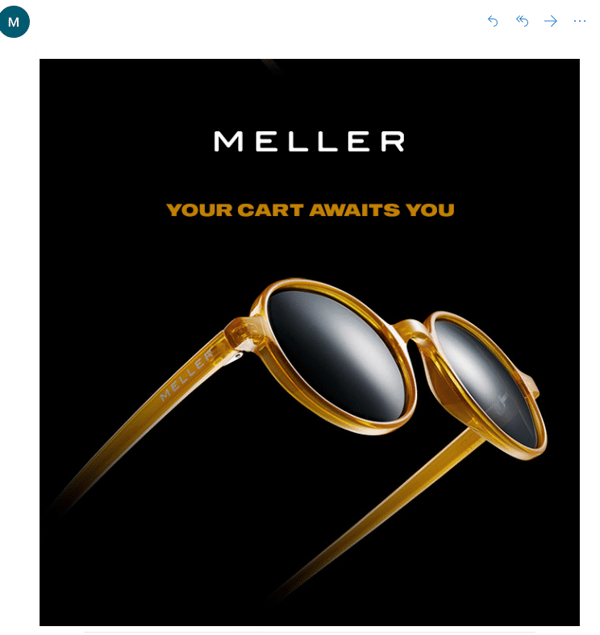
A simple message like the Meller one or, “Your [product] can’t wait to finally come home!” will endow what your customers have added to their carts as already belonging to them.
In a similar vein, research shows that changing rooms are a product of the Endowment Effect (tactile too) because once someone tries on a piece of clothing they immediately transfer their identity onto the garment and are less likely to give it up.
We know that there are no changing rooms on eCommerce platforms (yet), but you could persuade people to imagine trying the product on or having the dynamic message, “We’d like to know how it fits!” come checkout.
This will nudge your customers to:
Furthermore, you can use smart notifications as nudges in your checkout page, to get rid of your shoppers' anxiety and hesitation pre-purchase.

Crobox experiment for Under Armour
These messages are the facilitators that will boost the emotional connection from consumer to brand and keep your customers coming back for more of these tailored experiences in the future.
The Endowment Effect has loads of use cases for your web shop and can facilitate the shopping experience from consideration to conversion.
Throughout this article, we’ve:
The Endowment Effect will advance equality between product and consumer, and this is the principle that will shape the future of retail and define your eCommerce excellence.
Now it’s up to you.